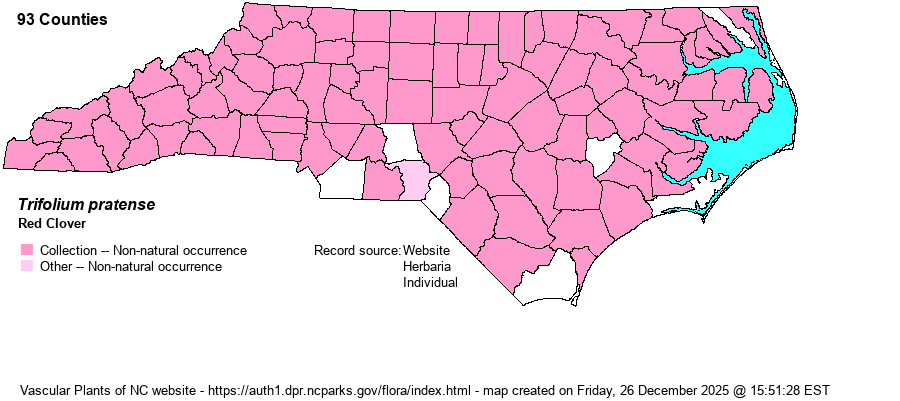| Author | L. | |
| Distribution | Throughout the state, no doubt in every county.
Native to Europe; in N.A. throughout except the Far North. | |
| Abundance | Common to locally abundant, especially dominant in mountain meadows. | |
| Habitat | Roadsides, lawns and yards, fields, meadows, clearings, disturbed ground, crop fields. |
| Phenology | Flowering and fruiting April-November. | |
| Identification | Red Clover is one of our most widespread plants, familiar to nearly everyone. The stems grow 1-2 feet tall, with broadly elliptical or obovate leaflets. Each leaflet sports a chevron or triangular patch of pale green. The flowers are numerous in a large head, rose-pink or raspberry-rose. The flowers are an excellent nectar source for insects, especially for skippers. | |
| Taxonomic Comments | Trifolium is a large genus of some 240-250 species globally, mostly north-temperate zone. Most are readily recognized as a clover by their 3 broad leaflets and globular to hemispherical head of densely-packed flowers. Flowers vary from white to pink, and red; the hop clovers have tiny yellow flowers. Some species were introduced for their forage value for livestock, others hitched a ride with hay, packing material, etc. Our two native species -- T. carolinianum and T. reflexum -- have suffered great loss of habitat and are now rare. | |
| Other Common Name(s) | | |
| State Rank | SE | |
| Global Rank | GNR | |
| State Status | | |
| US Status | | |
| USACE-agcp | FACU link |
| USACE-emp | FACU link |

